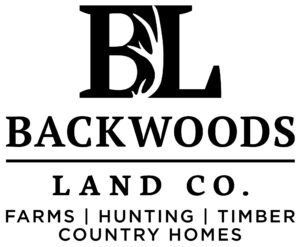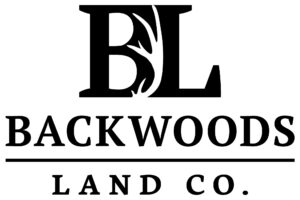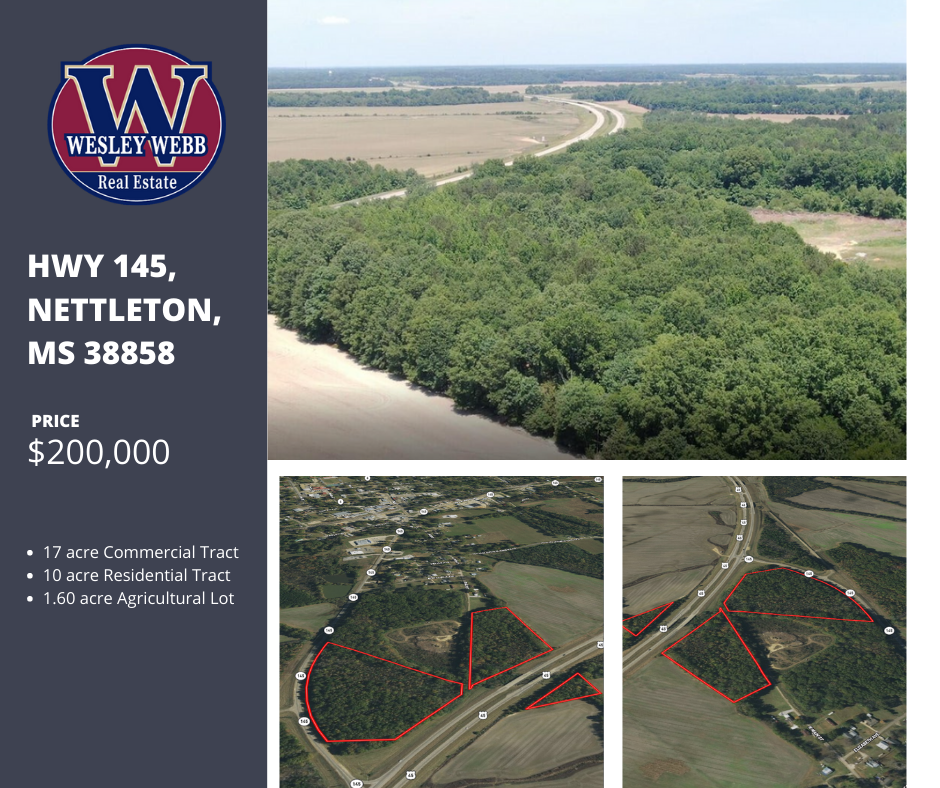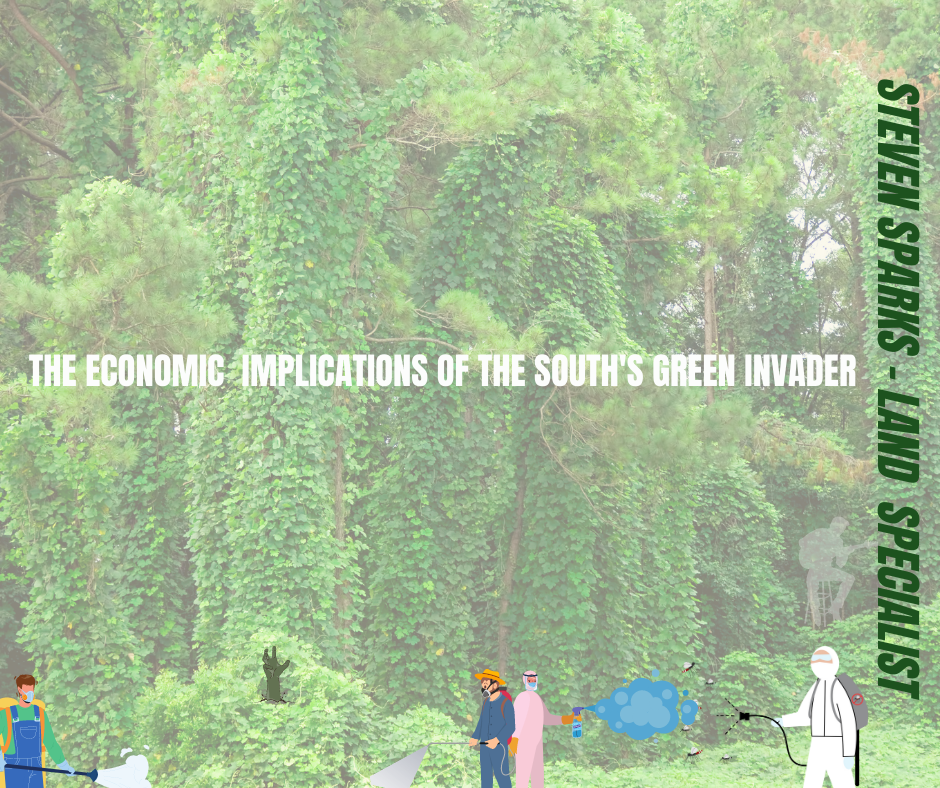Real Estate
The Evolution of the Pulpwood Industry in Mississippi
The Evolution of the Pulpwood Industry in Mississippi and Prices
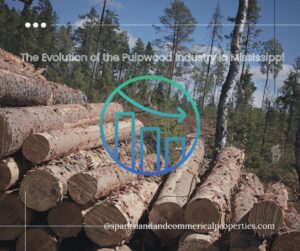
Mississippi, endowed with abundant fertile forests, holds a significant place in America’s pulpwood industry. The industry has witnessed a roller-coaster ride of stumpage and pulpwood prices over the years. The mid-20th century saw a surge in the pulpwood industry in Mississippi due to the construction of numerous pulp and paper mills, leading to increased pulpwood demand. However, the advent of the 21st century brought along technological advancements and imported pulpwood, unsettling the market, causing price fluctuations for stumpage and pulpwood per ton. Lets discuss what these terms mean.
When we talk about a ‘cord’, it refers to a specific forestry measurement which equals a stack of wood 4 feet high, 4 feet wide, and 8 feet long, often used for firewood. ‘Price per ton’ reflects the cost per ton of pulpwood, a type of timber primarily used for paper manufacturing. Factors such as the timber’s quality, tree species, demand, and accessibility significantly influence the price per ton of pulpwood.
Now, let’s get into some calculations. Imagine you have a 100-acre forest that generates 3.2 tons of timber per acre each year, of which 37.5% is pulpwood. Therefore, each acre produces 1.2 tons of pulpwood annually (3.2 tons x 37.5%). Over your entire 100-acre forest, that amounts to 120 tons of pulpwood each year (1.2 tons per acre x 100 acres).
If the stumpage price, which is the amount a landowner is paid for standing timber, is $2.00 per ton, then the total value of your pulpwood each year would be $240 (120 tons x $2.00 per ton).
Next, let’s convert this to cords. A cord of wood typically weighs around 2 tons. Therefore, the 120 tons of pulpwood you’re producing each year equates to approximately 60 cords of pulpwood (120 tons ÷ 2 tons per cord). With the stumpage price of $2.00 per ton, each cord is worth approximately $4.00 ($2.00 per ton x 2 tons per cord). So, the total annual value of your pulpwood, if measured in cords, would still be $240 (60 cords x $4.00 per cord).
In conclusion, the value of the pulpwood you can harvest from your 100-acre forest, whether calculated in tons or cords, comes out to be the same at $240 per year at the current stumpage price of $2.00 per ton. This underlines the importance of understanding and correctly using forestry measurements in the timber industry.
Today, in the mid-2020s, the pulpwood industry in Mississippi continues to evolve. The proliferation of digital technology has led to a decline in paper products, thereby reducing pulpwood demand. Despite the diminished demand, Mississippi’s forests continue to produce a substantial amount of pulpwood, leading to an oversupply and putting downward pressure on stumpage and pulpwood prices per ton. The industry is navigating this scenario by exploring new pulpwood applications, such as bioenergy production, particularly in the form of wood pellets for energy.
Despite the challenges, Mississippi’s pulpwood future appears promising due to its potential to leverage its rich forest resources for innovation and adaptability. While traditional pulpwood usage for paper production might be dwindling, burgeoning markets like bioenergy and engineered wood products could open new avenues for growth. Thus, the pulpwood industry in Mississippi is in a constant state of flux, faced with challenges, yet its rich history and potential for innovation and new opportunities.
Factors Influencing Paper-Making Wood Prices in Southern US
Understanding the influence of roundwood pulpwood supply and demand on its pricing is complex, primarily due to the availability of sawmill leftover chips as an alternative. The recent decade’s lumber production surge in the south has increased leftover chip production, helping maintain roundwood pulpwood prices stability. A thorough understanding of pulpwood pricing complexities can help decipher pricing trends.
Between 2015 and 2019, most southern region states experienced relatively minor changes (less than 10%) in pulpwood demand and its pricing. However, Alabama, Arkansas, Mississippi, and North Carolina deviated from this pattern. In these states, prices fell despite a slight drop in demand, or demand outpaced price increases. From 2019 to 2022, pulpwood prices soared by 10% or more in three states, with only Alabama witnessing a corresponding demand increase.
Comparing demand changes with pulpwood price changes from 2019 to 2022 reveals less correlation between price responses and demand changes. Contrarily, many states exhibit a negative relationship with demand. Unlike the more direct relationship between sawlog demand and prices, pulpwood prices are influenced by by factors like leftover chips, demand for oriented strand board, wood pellets, and pulp markets and exports.
Understanding Tree and Lumber Market Mechanisms
The tree and lumber markets operate differently, influenced by distinct pricing trend factors. Trade volumes, supply conditions, and demand factors play pivotal roles. Lumber, a heavily traded product, is highly susceptible to daily events, resulting in frequent, sometimes unpredictable price changes. The tree market is less reactive to daily events, with tree prices being more affected by long-term trends such as forest growth rates, harvesting costs, and overall timber product demand.
By mid-2021, this trend seemed to be shifting. Despite economic uncertainties, the robust housing market required substantial lumber, reflecting high demand in southern sawtimber prices, which peaked to a 14-year high. However, 2022 witnessed a decline, and by 2023, lumber prices bottomed out due to a decrease in new construction. The National Association of Home Builders predicts a decrease in housing starts to approximately 744,000 single-family homes in 2023, as builders continue to cut back despite a housing shortage.
The below chart is a current snapshot of lumber prices USD/1000 Board Ft

Pulpwood prices at end of 2002 below

During a housing boom, the demand for various timber products, including pulpwood, generally increases. This is because a surge in housing construction requires more raw materials, including timber for construction and pulpwood for paper-based products such as wallpaper, insulation, and cardboard used in packaging. When demand increases, it can lead to a rise in pulpwood prices as suppliers try to meet the greater need for their products.
However, the relationship between a housing boom and pulpwood prices isn’t as direct as with other timber products. This is mainly because the primary use of pulpwood is for paper products, not directly for construction. While certain types of timber such as sawlogs are directly used in housebuilding, leading to a more immediate and significant price impact during a housing surge, pulpwood doesn’t experience the same level of price fluctuation. The price of pulpwood is more influenced by the demand for paper products, which can be affected by a variety of factors, including digitalization trends, recycling rates, and global market dynamics.
Despite this, it’s important to note that a housing boom can indirectly affect pulpwood prices. For instance, increased construction activity can lead to a greater need for packaging materials, which are often made from pulpwood. This can result in a modest increase in pulpwood prices, even though the effect may not be as pronounced or immediate as it is for timber directly used in construction. So, while pulpwood prices may see some increase during a housing boom, they are somewhat separate from the direct influence of housing construction compared to other timber products.
Emerging Markets: Bioenergy and Engineered Wood Products
Pulpwood in Mississippi is finding new uses beyond traditional paper production, with its conversion into wood pellets for bioenergy production being one of the most significant. As the world shifts towards renewable energy sources, the demand for biomass in the form of wood pellets is growing, creating a new market for pulpwood growers. Mississippi’s location, near the Gulf of Mexico, provides a logistical advantage for shipping wood pellets to Europe, where the demand for bioenergy is particularly high. This emerging market could potentially counterbalance the declining demand for pulpwood for paper production.
Future Pathways: Forestland Investment and Forest Management
While the forest products market dynamics continuously shift, some trends can guide investors and managers to anticipate market changes.
- Climate Change and Forest Management: Climate change increasingly impacts the forest products market. Changes in weather patterns can affect forest growth rates and pest and disease occurrences, influencing timber production and prices. Additionally, growing interest in forests as carbon sinks could create new markets for forest carbon credits.
- Technological Innovations: Technological breakthroughs in remote sensing and data analysis are revolutionizing forest management. These technologies can enhance forest inventory data, optimize harvest operations, and improve supply chain efficiency, leading to higher profits for forestland owners and managers.
- Shifting Demand Patterns: Demand for forest products can fluctuate due to factors like population growth, economic conditions, and consumer preferences. For instance, there is a rising demand for sustainable and renewable forest products, which can create new opportunities for forestland owners and managers.
- Investment Trends: The timberland investment landscape is also evolving. While institutional investors have historically dominated the timberland investment space, there is growing interest from individual investors and family offices, which could alter timberland investment structures and management.
Resources and Links
- US Forest Service – This federal agency provides a wealth of information on forests and forestry in the United States, including research, statistics, and resources on sustainable forest management. US Forest Service
- Mississippi State University Extension Service – This extension service offers resources and educational programs on forest and wildlife resources in Mississippi. MSU Extension
- National Association of Home Builders – This trade association provides data and forecasts on the housing market in the United States, which can affect demand for lumber and timber products. NAHB
- Timberland Investment Resources, LLC – This company offers information and services related to timberland investment. They also provide a blog that covers various aspects of investing in timberland. Timberland Investment Resources
- The Forest History Society – This organization offers a wide range of resources on the history of forests and forestry, including the evolution of the timber industry and forest management practices. The Forest History Society
The Evolution of the Pulpwood Industry in Mississippi Read More »
How to Avoid Being Misled by Price Per Square Foot | Discover the Limitations of Price Per SF
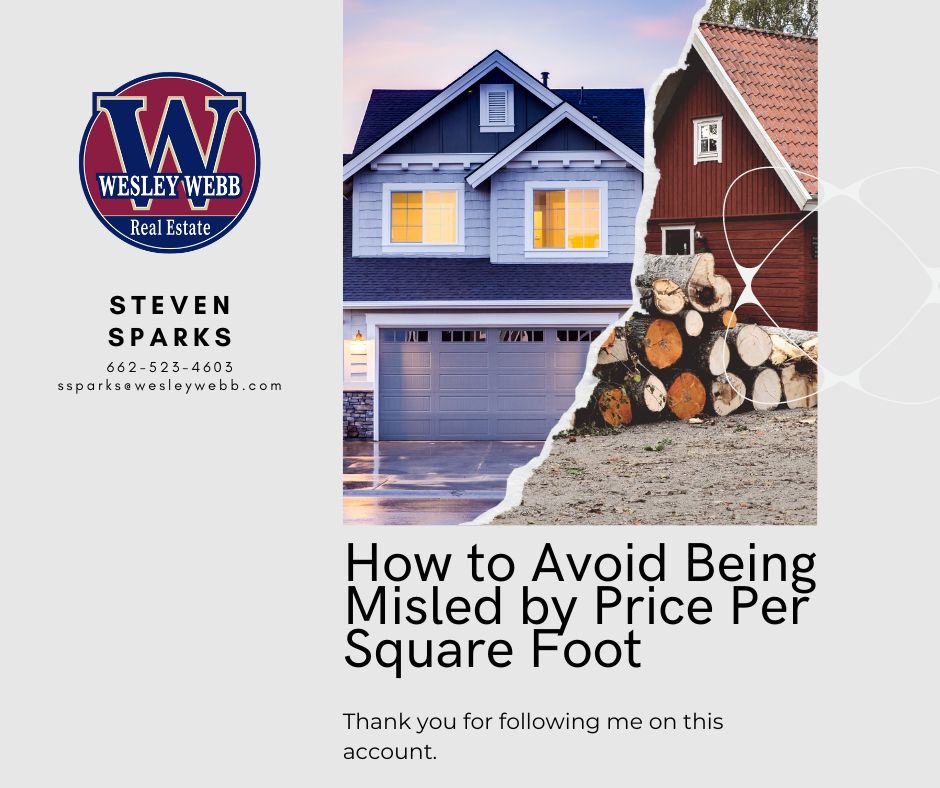 Price per square foot (PSF) is a common metric used in real estate to compare the value of homes or properties. However, it can be misleading, especially when it comes to rural properties with homes.
Price per square foot (PSF) is a common metric used in real estate to compare the value of homes or properties. However, it can be misleading, especially when it comes to rural properties with homes.
Here are a few reasons why PSF can be misleading for rural properties:
- Varying Condition: For example, two homes with the same square footage may have vastly different values if one is in excellent condition with modern finishes, 4,500 sf while the other is 1,200 sf in need of some minor updates in overall average condition, yet has a 900 sf new shop with living quarters and other outbuildings and workspaces, an 18 stall high-end horse barn with large tack room with a good sized stock fishing lake on 10 acres in a secluded yet desirable area, yet, their PSF could still be close to the same. In this case, the PSF would not accurately reflect the value of each property.
- Varying Land Sizes: Rural properties often have larger land sizes compared to urban or suburban areas. As a result, the price per square foot calculation can be heavily skewed by the size of the land. A property with a large land size may have a lower price per square foot compared to a smaller property, even if the larger property is more valuable due to diminished returns.
- Varying Home Sizes: Rural homes also tend to have varying home sizes. Some homes may be large with multiple bedrooms and bathrooms, while others may be small cabins. PSF can be misleading in this scenario since larger homes will naturally have a lower PSF than smaller homes, even if they are of similar quality due to yet again, diminished returns.
- Varying Amenities: Rural properties may have unique features such as a pond, a barn, or a farm. These features add value to the property, but they are not reflected in the PSF calculation. Therefore, the PSF may not accurately represent the overall value of the property.
- Varying Quality: Rural homes can also vary in quality, which can affect the overall value. For example, a newly built home will have a higher PSF than an older home in need of repairs, even if the older home is on a larger piece of land or has unique features.
PSF can be misleading when it comes to rural properties since it does not take into account various factors such as land size, home size, amenities, and quality.
In urban and suburban areas with subdivisions, PSF can be a little more of a helpful tool in determining the value of homes. Especially in cutter cutter subdivisions with similar lot sizes. However, it is important to note that PSF does not always accurately reflect the value of a property, even in these areas. Especially when calculation the overall price per sf trends in the area.
Here are a few reasons why PSF can be misleading when comparing overall price per sf values in suburban and urban areas:
- Quality: While homes in subdivisions may have similar square footage, there can be differences in the quality of construction, materials used, and finishes. These factors can significantly affect the overall value of a property but are not reflected in the overall average PSF calculation in the area.
- Condition: The condition of a property, including maintenance and updates, can also impact its value. A home that has been well-maintained and updated will have a higher value than a similar home that has not been properly maintained, yet their PSF could be the same if the home that has no updates but has been well maintained has somewhat higher quality of finish and has a two car garage with a basement.
- Location: The location of a property can also affect its value. A home on a busy street or near a noisy highway will typically have a lower value than a similar home in a quieter location. PSF does not take into account exact location of the property and say, the a beneficial views and/or other appealing or negative external factors, even though they are in the same immediate neighborhood.
When it comes to evaluating properties, PSF can provide greater accuracy in suburban and urban areas with homes that have similar lot and heated sf sizes than in rural areas, however, it may not accurately reflect the overall value of a property that has varying amenities like pools, garages, and outdoor living spaces. These amenities can differ significantly from one property to another and can have a significant impact on the property’s value. As PSF does not take these amenities into account, it can be misleading to compare properties based solely on their PSF.
Finally, diminished returns can have a profound effect on price per sf in all types of area.
Diminishing returns is a concept that describes how the marginal benefit of adding more of a certain input to a production process gradually decreases. In the context of real estate, this concept can have a significant impact on how we interpret and analyze data such as price per square foot (psf).
Price per square foot is a widely used metric in the real estate industry to compare the relative value of different properties. It is calculated by dividing the total price of a property by its square footage. For example, if a 2,000 square foot house sells for $500,000, its psf would be $250.
However, the psf metric can be misleading when dealing with larger properties. This is because larger properties often have diminishing returns in terms of price per square foot. For instance, a 2,000 square foot home may be worth $250 psf, but a 4,000 square foot home on the same street may be worth $225 psf. This means that the price per square foot of the larger home is lower than that of the smaller home, even though the larger home is worth more overall.
There are several reasons why this occurs. Firstly, the cost of building additional square footage may decrease as the property gets larger, leading to a lower psf price. For example, building an additional 1,000 square feet onto a 2,000 square foot home may cost $200 psf, whereas building the same amount onto a 4,000 square foot home may only cost $150 psf.
Additionally, larger homes often have higher fixed costs, such as the cost of a pool or a large yard, which can be spread out over more square footage, leading to a lower psf price. Furthermore, larger properties may have more unique features or amenities that add value to the property, but are not reflected in the psf metric. For example, a large estate may have a tennis court or a guest house that adds significant value, but does not necessarily increase the psf price.
As a result, when analyzing real estate data, it is important to take into account the potential impact of diminishing returns on the psf metric, particularly when dealing with larger properties. This may involve using alternative metrics, such as price per acre or price per room, to compare properties of different sizes. Alternatively, analysts may need to adjust their interpretation of the psf metric to account for the impact of diminishing returns on larger properties.
In conclusion, price per square foot (PSF) can be misleading when evaluating rural properties due to varying factors such as land size, home size, amenities, and quality. In suburban and urban areas, PSF can provide greater accuracy when homes have similar lot and heated sf sizes, but it may not accurately reflect the overall value of properties with varying amenities. Moreover, the concept of diminishing returns can affect the accuracy of PSF for larger properties, where the cost of building additional square footage may decrease. Therefore, when evaluating properties, it is essential to consider various factors that can affect their value, in addition to PSF.
Here are some online resources and links that can provide further information on the topic:
- “Why Price Per Square Foot Is Not the Best Way to Measure a Home’s Value” by Chris Larson, The Balance: https://www.thebalance.com/why-price-per-square-foot-is-not-the-best-way-to-measure-a-home-s-value-4174472
- “Price per square foot: Does it matter?” by Sarah Pike, Redfin: https://www.redfin.com/blog/price-per-square-foot
- “The Danger of Using Price Per Square Foot to Price Your Home” by Teresa Cowart, Teresa Cowart Team: https://www.teresacowartteam.com/blog/the-danger-of-using-price-per-square-foot-to-price-your-home/
- “The Problem with Price Per Square Foot” by Daren Blomquist, RealtyTrac: https://www.realtytrac.com/news/home-prices-and-sales/the-problem-with-price-per-square-foot/
- “Why Price Per Square Foot is not a Reliable Indicator of Home Value” by Bill Gassett, Max Real Estate Exposure: https://www.maxrealestateexposure.com/why-price-per-square-foot-is-not-a-reliable-indicator-of-home-value/
- “How to Accurately Value a Home” by Zillow: https://www.zillow.com/sellers-guide/how-to-accurately-value-a-home/
- “The Truth About Price Per Square Foot” by J. Andrew English, RISMedia: https://rismedia.com/2018/11/19/truth-price-square-foot/
- “The Pros and Cons of Using Price Per Square Foot to Price a Home” by Bethany Johnson, Rocket Homes: https://www.rockethomes.com/blog/home-selling/price-per-square-foot
The Watershed Warrior
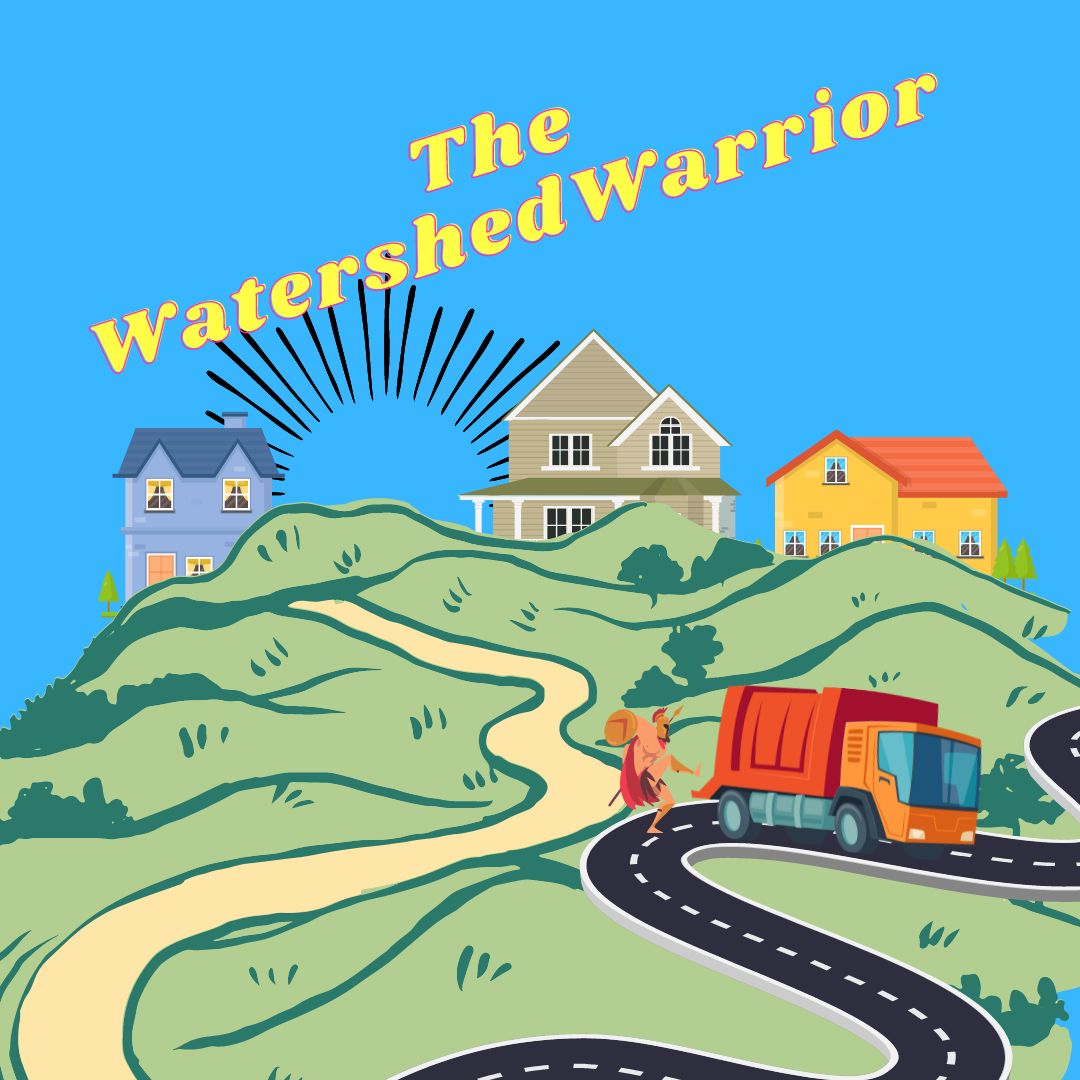
As Bill Billsbilly, patrolled his beloved watershed around his neighborhood, he knew that his enemies were always lurking nearby. Garbage trucks, with their noxious fumes and potential for littering, were his greatest foes.
So, whenever he heard the rumble of a garbage truck approaching, Bill would grab his trusty spear and don his warpaint. He would leap into action, charging towards the truck and shouting at the top of his lungs.
“Back away from my watershed, you scoundrels!” he would yell.
The garbage truck drivers would usually speed away, scared off by the wild and fierce looking man with war paint charging toward them. But if they were foolish enough to stick around, Bill was always ready to defend the watershed with all his might.
One time, a particularly stubborn garbage truck driver refused to leave, insisting that he had a job to do and couldn’t just abandon his route. Bill was having none of it. He marched right up to the truck, spear in hand, and began banging on the side with all his might.
“Get out of here, you dirty trash-mobile!” he shouted.
The driver, clearly confused and frightened by the wild man with the spear, finally relented and drove away. Bill stood like a boss, watching as the garbage truck disappeared down the road.
From that day forward, Bill became known as the ultimate defender of the watershed. People in the community would wave and cheer whenever they saw him, grateful for all the hard work he did to keep their water clean and pure despite the neighborhood smelling like pure garbage.
And whenever a garbage truck dared to drive by, they knew better than to mess with the “Watershed Warrior.”
Bill had other talents besides chasing garbage trucks, he could also pick a tune. He formed a band called the Watershed Warriors after his nickname of course. One their songs, “Manage the Land Use Dummy ,” quickly became a hit with audiences across the country.
As the band gained popularity, soon, their song hit number one on the charts, and the Watershed Warriors became a household name. The End.
WHAT IS A WATERSHED EXACTLY?
Think of a watershed like a giant bathtub that collects rainwater and snowmelt from surrounding mountains and hills. Just like in a bathtub, the water flows down to the drain, which in this case is a river or a stream. Before it reaches the drain, the water runs over and through the ground, picking up sediment and pollutants along the way. This can include fertilizers, pesticides, and even trash from garbage trucks as Bill would have it.
That’s why it’s important to take care of watersheds. We can protect them by using natural filters like trees and plants, which can trap pollutants and reduce sediment runoff. We can also prevent soil erosion and minimize pollution from urbanization, agriculture, and other human stuff. When we protect watersheds, we not only preserve the health of our environment and the habitats of wildlife, but we also ensure that we have clean and safe water for our daily needs. Healthy watersheds can also have a positive impact on property values, as people are more likely to want to live in areas with access to clean water and natural beauty. Would you pay a premium for it?
It catches rainfall and snowmelt, then channels it into creeks, streams, and rivers, ultimately leading to a larger body of water, such as a lake or ocean even. Yes, Watersheds can vary in size greatly, ranging from small, localized areas to large regions that span multiple states or even countries. However large or small from the Mighty Mississippi to a pond on your hunting land, they are started small.
If a town is located within the boundaries of a watershed, it is possible for the watershed to supply the town with all the water it needs. This is because the water that falls within the watershed is collected and treated to make it safe for human consumption. Therefore, it’s important to protect the quality of the water within the watershed to ensure that it remains safe to drink.
A watershed encompasses all the land, vegetation, and water resources that are found within its boundaries. This includes forests, fields, wetlands, and rivers. The health of a watershed depends on the balance of all these things. Trees and plants help absorb and filter rainfall, preventing soil erosion and sedimentation of the waterways. Wetlands are like sponges, absorbing water and slowly releasing it into the surrounding environment, thereby preventing flooding downstream.
It is important to take care of watersheds because they provide many benefits to communities, including clean water for drinking, recreation, and irrigation. In addition, watersheds help support healthy ecosystems by providing habitat for wildlife and supporting biodiversity. On the other hand, degradation of a watershed can lead to erosion, pollution, and a loss of habitat, which can impact the health of the entire ecosystem.
WATERSHED VS CATCHMENT BASIN
A watershed and a catchment basin are similar in that they both refer to an area of land where all the water that falls within its boundaries flows to a common outlet, such as a lake, river, or ocean. However, a watershed is typically larger in scale than a catchment basin and encompasses all the land that drains to a common outlet, including hills, mountains, and valleys. A catchment basin, on the other hand, refers specifically to the area of land where water collects before flowing into a larger body of water.
Both watersheds and catchment basins are important because they provide a source of freshwater for drinking, irrigation, and industrial use. They also provide a habitat for various plants and animals, which in turn supports the food chain.
When PESTICIDES AND OTHER CHEMICALS these substances are applied to crops or spilled onto the ground, they can be carried by rainwater and runoff into streams and rivers, causing harm to aquatic life and making the water unsafe for drinking or recreational use.
When trees are cut down or land is paved over, there are fewer plants to absorb and filter rainwater. This can lead to increased erosion and sedimentation in streams and rivers, which can harm aquatic life and cause flooding.
DAMS IN RELATION TO WATERSHEDS
Dams can have both positive and negative impacts on the surrounding watershed. On one hand, they can provide a reliable source of water for drinking, irrigation, and other uses. On the other hand, they can disrupt the natural flow of water, affecting downstream ecosystems and wildlife.
PROPERTY VALUES IN RELATION TO WATERSHEDS
Real lie example : In the city of Atlanta, Georgia, the Chattahoochee River watershed has been a significant factor in property values.
Properties located near the Chattahoochee River, which serves as a source of drinking water for the city, are highly sought after due to the recreational opportunities and natural beauty provided by the river. According to a study conducted by the Trust for Public Land, properties located within a half-mile of the river are worth an average of 43% more than properties located farther away.
Furthermore, properties located in areas with healthy watersheds tend to be more valuable than those in areas with degraded watersheds. In the case of the Chattahoochee River, efforts to improve water quality and preserve the watershed have led to an increase in property values over time.
Overall, the health of a watershed can have a significant impact on property values in the surrounding area. As a result, protecting and preserving watersheds can have both ecological and economic benefits for communities.
As a result of the preservation efforts, the Ruffner Mountain Nature Preserve has become a popular destination for outdoor recreation and education. Additionally, the protected watershed has helped to maintain the quality of the Cahaba River’s water, which has been a selling point for nearby properties. In fact, according to a study conducted by the Trust for Public Land, the nature preserve has contributed to a $6.9 million increase in property values for homes located within a half-mile of the preserve.
Another example of how watersheds can affect property values is the Chesapeake Bay watershed in Maryland, Virginia, and Pennsylvania. The Chesapeake Bay is the largest estuary in the United States, covering an area of over 64,000 square miles, and is fed by over 150 rivers and streams. The watershed is home to over 18 million people and is a vital source of drinking water, recreation, and economic activity.
In recent years, the health of the Chesapeake Bay has been threatened by pollution from agricultural runoff, urban development, and other sources. Efforts have been made to restore the health of the Bay through initiatives such as the Chesapeake Bay Watershed Agreement, which aims to reduce pollution and restore habitat.
The health of the Chesapeake Bay and its watershed can have a significant impact on property values in the region. A study by the Chesapeake Bay Foundation found that properties located within 1,000 feet of the Bay and its tributaries had an average value that was 38% higher than similar properties located farther away. This suggests that proximity to a healthy and vibrant watershed can be a significant factor in property values. On the other hand, properties located near areas of the Bay and its tributaries that are experiencing water quality problems may see a decline in value.
Here are some online resources and links related to watersheds and property values:
“The Impact of Watershed Conditions on Property Values” – a research paper by the US Forest Service: https://www.fs.fed.us/pnw/pubs/journals/pnw_2012_kovacs001.pdf
“The Relationship between Water Quality and Property Values: A Review of the Literature” – a report by the Environmental Protection Agency: https://www.epa.gov/sites/default/files/2015-10/documents/relationship_between_water_quality_and_property_values.pdf
“Watershed Services and Property Values” – an article by the American Geosciences Institute: https://www.americangeosciences.org/critical-issues/research-database/docs/watershed-services-and-property-values
“The Value of Watersheds” – a report by the World Wildlife Fund: https://www.worldwildlife.org/publications/the-value-of-watersheds
“Watershed Property Values: A Case Study of the Jordan Lake Watershed in North Carolina” – a research paper by Duke University: https://dukespace.lib.duke.edu/dspace/handle/10161/4829
These resources provide valuable information on the relationship between watersheds and property values. They analyze the impact of watershed conditions, water quality, and other factors on property values, providing useful insights for homeowners, policymakers, and other stakeholders.
The Watershed Warrior Read More »
Methods Used by Rural Appraisers to Extract Land Value from Improvements When There Are No Recent Comparable Land Sales
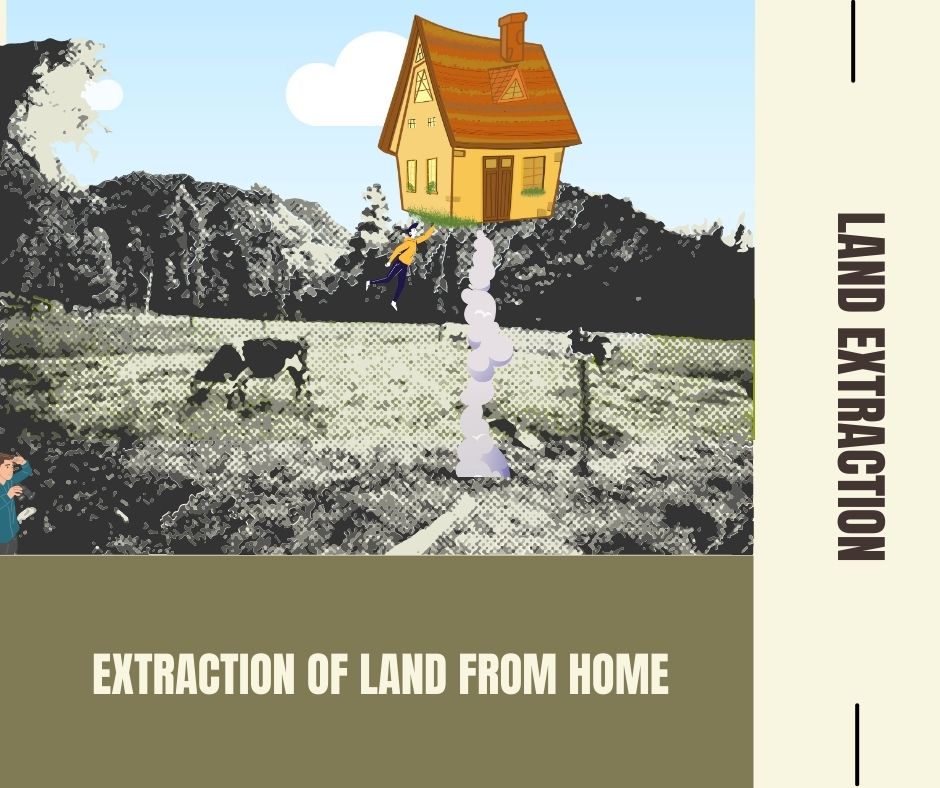
Amidst the sizzling heat of a summery day in the quaint and charming town of Millville, Jake, a real estate appraiser, was tasked with the responsibility of evaluating and determining the value of two distinct properties that were scheduled to be put up for sale. The first of the two properties, 130 Crazy Horse Drive, spanned over a massive area of 20 acres, made up of a combination of flourishing, lush woodland, and verdant, green pasture. The property boasted an extensive and spacious farmhouse along with several auxiliary structures. The second property, 975 Don’t Go Down This Street, was a 15-acre property with similar characteristics and features.
Using the Sales Comparison Method to Evaluate the Properties
To start his evaluation, Jake used the Sales Comparison Method first, and it commences with the appraiser identifying properties that have been recently sold in the same market and are similar to the property being appraised. He first took the step of determining the property’s specific nature and purpose of the appraisal. Moving forward, the appraiser proceeded to define the scope of the appraisal, which entailed identifying the market area and the date of value for the appraisal. After that, he collected data on comparable sales and thoroughly analyzed and scrutinized the most relevant sales, based on various factors, such as location, physical attributes, and the date of sale. The appraiser then made adjustments to account for differences between the subject property and the comparable properties, such as size, condition, and amenities. By analyzing the adjusted sale prices, the appraiser could estimate the market value of the subject property. Finally, the appraiser reviewed the analysis and conclusions to ensure that they were based on sound data and were reasonably accurate.
The Land Extraction Method: An Alternative Approach
However, in the absence of recent comparable land sales in the immediate market area, Jake could not find enough land sales within the past several years to arrive at a supportable land value. Therefore, he resorted to using the Land Extraction Method to determine the land value. This method involves separating the land’s value from the value of any improvements on the land, such as buildings, and then arriving at a final estimate of the value of the land itself. By utilizing this method, the appraiser could evaluate the land component’s value of the subject property, even in the absence of recent comparable land sales.
Calculating the Value of Improvements
To proceed further, Jake calculated the value of the improvements on each property. After calculating the Replacement Cost New, which was estimated to be $300,000 for 130 Crazy Horse Drive and $275,000 for 975 Don’t Go Down This Street, he determined the Depreciated Value of Improvements by subtracting the estimated depreciation value of $125,000 for 130 Crazy Horse Drive and $130,000 for 975 Don’t Go Down This Street from the Replacement Cost New. Using the Depreciated Value of Improvements, Jake calculated the Site Value for each property, which amounted to $275,000 for 130 Crazy Horse Drive and $180,000 for 975 Don’t Go Down This Street.
Finally, to arrive at a final estimate of the value of each property, Jake calculated the Site Value per Acre for both the properties, which amounted to $13,750 for 130 Crazy Horse Drive and $12,000 for 975 Don’t Go Down This Street. To ensure a reasonable and accurate appraisal, Jake made the requisite adjustments based on various factors such as location, zoning, and accessibility. However, he was unaware of the numerous other crucial factors that he had to take into consideration before finalizing his appraisal, which could have potentially altered the final evaluation of each property.
Additional Methods
A few additional methods that appraisers use to determine land value in a property with improvements include the Land Residual Method and the Development Method. The Land Residual Method involves subtracting the value of the improvements from the total property value to determine the land value, which is useful when there are no recent land sales to compare. The Development Method estimates the potential profit that could be earned by a developer from developing the land, considering factors like zoning regulations and potential revenue. By utilizing these methods in conjunction with others, appraisers can obtain an accurate evaluation of the subject property’s land value, especially in rural areas where comparable land sales may be scarce. Another method that appraisers may use is the land-to-building ratio method, which involves comparing the land value to the building value of similar properties and applying that ratio to the subject property. The land-to-building ratio method, also known as the Allocation Method, is another technique used by appraisers to find the land value in a property with improvements. This method involves comparing the ratio of land value to building value for similar properties in the market area, and then applying that ratio to the subject property to estimate the land value. By using this method, appraisers can arrive at a reliable land value estimate even in the absence of recent land sales or in cases where other methods are not applicable.
It’s worth noting that when using any of these methods to determine land value in a property with improvements, appraisers must consider various factors that may affect the land’s value. These factors may include soil quality, topography, frontage, and other characteristics that may affect the property’s potential use and market demand. By taking these factors into account and employing multiple techniques, appraisers can ensure a comprehensive evaluation that accurately reflects the value of the subject property.
Conclusion
Overall, determining the value of land with improvements can be a complex process, particularly in rural areas where there are no recent comparable land sales. However, with the right expertise and tools, appraisers can arrive at a reasonable and accurate appraisal of the land value. By employing the Land Residual Method, the Development Method, the Allocation Method, and other techniques, appraisers can ensure that the appraisal considers various factors that may impact the land value.
Exploring the Difference Between Excess and Surplus Land
As a real estate professional, I have come across many properties that have additional land that is not necessary to support the existing improvement. This additional land is either considered as Excess Land or Surplus Land, and understanding the difference between these two scenarios is crucial when it comes to determining the value of a property.
 Excess Land is land that is not necessary to serve or support the existing improvement but has a different highest and best use and can be separated and sold off. For instance, imagine a property with a main parcel and a vacant parcel adjacent to it with easy road access. This vacant parcel is considered as Excess Land as it has a different highest and best use and can be sold off separately. The additional land has the potential to contribute to the overall value of the property.
Excess Land is land that is not necessary to serve or support the existing improvement but has a different highest and best use and can be separated and sold off. For instance, imagine a property with a main parcel and a vacant parcel adjacent to it with easy road access. This vacant parcel is considered as Excess Land as it has a different highest and best use and can be sold off separately. The additional land has the potential to contribute to the overall value of the property.
On the other hand, Surplus Land is not necessary to serve or support the existing improvement, but it cannot be separated and sold off. Unlike Excess Land, it does not have a different highest and best use and may or may not contribute to the value of the overall parcel. An example of this would be a home situated on a larger than typical parcel with no direct access other than traveling over the main parcel.
When appraising a property, it is important to consider the highest and best use of the parcel as if it were vacant. This involves applying the highest and best use test, which considers whether the land is legally permissible, physically possible, financially feasible, and maximally productive. Based on the results of this test, the additional land can be determined to be either Excess Land or Surplus Land.
Excess Land typically contributes more value to the property as it has a different highest and best use and can be sold off, while surplus land does not have a separate value a

and may or may not contribute to the overall property. Additionally, it is important to consider the zoning regulations and deed restrictions when dealing with additional land, as they will play a role in determining the value of the property.
The photograph on the left is a clear demonstration of the differences between two pieces of land. One is narrow and lacking road frontage, while the other is expansive with ample frontage. This contrast highlights the important factors that must be considered when evaluating a piece of property.
It is important to note that this is just one example of the differences between excess and surplus land. The shape and frontage of a parcel can greatly impact its potential for development and overall value. It is up to the wise property owner to consider all aspects of a piece of land, not just its size, before making a decision.
When evaluating a potential piece of property, take a closer look at its shape and frontage. Consider its potential for supporting other developments and weigh the opportunities it presents. Remember, the value of a piece of land is not just in its size, but in its shape, frontage, and ability to support other developments.
Understanding the difference between Excess Land and Surplus Land is crucial for real estate professionals, as it will help them in determining the value of a property and providing the best advice to their clients.
Exploring the Difference Between Excess and Surplus Land Read More »
